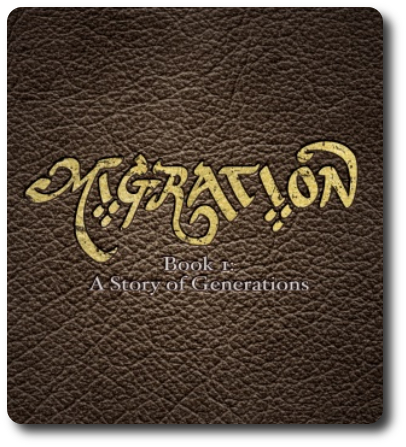
The Basics:
- For ages 5 and up (publisher suggests 12+)
- For 2 to 4 players
- Approximately 5 to 10 minutes to complete
Geek Skills:
- Counting & Math
- Logical & Critical Decision Making
- Strategy & Tactics
- Risk vs. Reward
- Hand/Resource Management
- Worker Placement & Area Control
Learning Curve:
- Child – Easy
- Adult – Easy
Theme & Narrative:
- Lead your explorers and claim territory before your opponents do!
Endorsements:
- Gamer Geek approved!
- Parent Geek approved!
- Child Geek approved!
Overview
The story of how we came to this land is known by every child and retold by the elders again and again. We do this so we do not forget the challenges and sacrifices so many made. For some, they followed a dream. For others, it was pure ambition. Regardless of how or why the explorers came to the new land – what we now call home – every generation that comes after is part of their story, as they are a part of ours.
Migration: A Story of Generations, a self-published game by game designer Joe Cannon, is comprised of 1 double-sided game sheet, 60 colored Explorer tokens (15 each in the colors red, blue, white, and yellow), 2 player aid cards, 10 Explorer reference cards, and 4 Pioneer Town markers (1 each in the colors red, blue, white, and yellow). The game sheet and cards are made of thick card stock and durable. The Pioneer Town markers and tokens are made of thick plastic. What will be immediately noticed before anything else, however, is the artwork. Migration is beautiful. The illustrations are highly stylized, exceedingly professional, and wonderfully thematic. In fact, the entire game, including the game box right down to the rule book, has been carefully created to provide a very complete game theme and narrative.
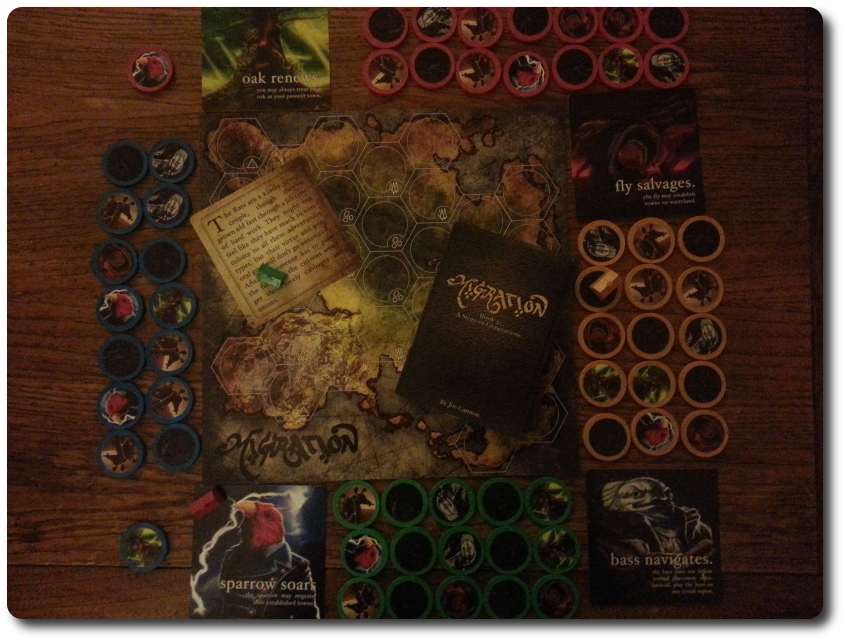
Making Ready for the Journey
Note: Before the game can be played for the first time, the owner must apply stickers to the colored tokens. The entire process took us about 15 minutes without distractions.
To set up the game for two players, first place the game mat in the middle of the playing area. The game mat is double-sided. Make sure the side that shows the smallest continent with spaces that do not contain any icons is face-up if playing a 2-player game. If playing a 3 or 4-player game, use the other side of the game mat.
Second, have each player select one of the four colors they would like to use and take all 15 Explorer tokens of that color along with the matching colored Pioneer Town marker. Any unclaimed tokens and markers are set aside and not used for the duration of the game.
Third, each player now selects 12 out of the 15 Explorer tokens they want to use in the game. The players can select any combination they want as long as they do not have any more than 5 of any one particular Explorer type. The selected tokens are kept in front of the player and the remaining are removed for the duration of the game. If the players like, they can keep their selected Explorer tokens secret. This makes the game much more strategic and tense!
Fourth, and if needed, pass out the player aid and reference cards.
That’s it for game set up. Time to migrate, but before the journey begins, let’s introduce the Explorers.
Intrepid Travelers
Migration: A Story of Generations comes with 5 different Explorer types. Each Explorer is a specific animal, bug, or fish. Each type has a special ability that gives it a unique advantage, as well as a disadvantage. Each Explorer is summarized here. Each Explorer token has two sides. One side will show the image of the Explorer and the other side will be an image of a wasteland. Wastelands are the result of excessive expansion or destructive battles.
The Bass

The Bass Explorer (or as my 8-year-old likes to call him, Jabba the Fish) is more at home in the ocean that surrounds the coastal region, but is not above stepping out of the water to claim territory. The Bass is the only Explorer who can establish a Pioneer Town, which makes the Bass an exceedingly useful Explorer. But that’s where his usefulness ends as the Bass will not venture any further than the coastal region, preferring the sandy beaches to whatever might be found away from the ocean blue.
The Oak
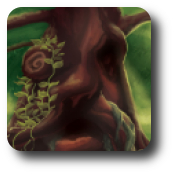
With roots set deep in the earth and branches that reach up to the clouds, the Oak is a place of refuge and of new beginnings. Many live among the Oak’s branches and call it their home, only to leave for new lands and adventures. Still, many return, for the Oak represents safety. The Oak is always treated as a Pioneer Town, regardless of where the player’s Pioneer Town marker might be currently placed on the game mat. This allows the player to use the Oak as a reusable node from which they can launch new migration journeys.
The Rat
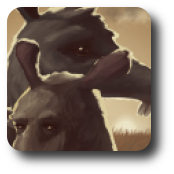
The Rats are not creatures of filth and disease They are, in fact, just the opposite. They are strong workers, full of virtue and goodwill. They believe there is always hope and bending one’s back to labor will always reap prosperity, happiness, and health. The Rat is the most abundant of Explorers and can take over large areas of the land before other Explorers can.
The Sparrow

Militant, proud, and a stern believer in tradition, the Sparrows look to maintaining order and discipline. The only thing they hold in higher regard is honor, which they will savagely defend. To a Sparrow, the world is open to all possibilities and no challenge cannot be overcome if one simply fly into it or over it. The Sparrow is a unique Explorer that can traverse previously occupied areas to claim new territory. Any Explorer token that is flown over is replaced with the wasteland side of the player’s token, which also makes the Sparrow the only Explorer who is capable of attacking an opponent.
The Fly
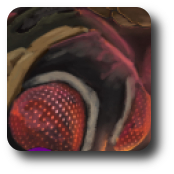
The wastelands remain uninhabitable to all but the Fly, who is perhaps the most hardy and versatile of all the Explores. Not only can the Fly establish Pioneer Towns like the Rats, but the Fly can also turn the wastelands into thriving colonies. In a pinch, the Fly can mean the difference between victory and defeat. A surprisingly powerful and useful little bug.
Manifest Destiny
The game is played in turns with no set number of rounds. On a player’s turn, they will select one of their Explorer tokens and place it on a free space on the game mat. When placing an Explorer token, the following rules must be followed that indicate a legal move:
- The Bass can only be placed on an open land space that is located on the coastline. Once placed, the Pioneer Town marker is placed on the Bass token.
- The Fly, Rat, Oak, and Sparrow can be placed next to any Explorer token that belongs to the player that contains the Pioneer Town token. Once placed, the Pioneer Town marker is relocated to the newly placed Explorer token.
- The Fly, Rat, Oak, and Sparrow can be placed next to any Oak, regardless if the Oak Explorer token has the Pioneer Town marker on it or not. Once placed, the Pioneer Town marker is relocated to the newly placed Explorer token.
- The Sparrow can occupy any unclaimed land space that is in a straight line from the player’s Pioneer Town or Oak. Any Explorer token the Sparrow flies over is turned into a wasteland. To turn an Explorer token into a wasteland, the player must place on top of it one of their own Explorer tokens not yet used with the wasteland side up. Once placed, the Pioneer Town is relocated to the Sparrow.
- The Fly is the only Explorer token that can be placed on the a wasteland as if it were a normal empty land space.
Additionally, if playing a 3-player game, the land spaces that have a mountain icon on it cannot be entered or crossed.
If a player is ever unable to make a legal move, they are out for the duration of the game.
The End of the Expansion
The game continues until all the players have run out of legal moves. Depending on the number of players, the game will be scored differently.
- Every Bass, Oak, Sparrow, and Fly Explorer token played to the game mat and not covered up by a wasteland counts as 1 point, with the Rat counting as 2 points.
- When playing on the larger continent, any Explorer tokens on a “Fertile Ground” space receive 1 additional point
The player with the most points wins the game!
Houserules
If playing with younger Child Geeks who are just now starting to play more complicated games, we suggest you allow them to use all 15 of the Explorer tokens instead of picking 12. This will give them more chances to makes the right choices instead of limiting them based on their initial Explorer token selection. Once they understand the game, reduce their total number of tokens to 12.
To learn more about Migration: A Story of Generations, see the game’s Facebook page or the game’s web page on the Game Crafter where the rules of the game can be reviewed in full.
Prediction
Migration has “WIN” written all over it. The game hits all the high points before it is even played. Let’s review…
Outstanding artwork that is appealing to the eye, ignites the player’s imagination, and draws them to the table?
Check!
An interesting game theme and narrative that invites the player to explorer and take part in a story of exploration and domination?
Check!
Easy to learn game rules with in-depth play that promotes and requires the use of logical thinking, strategy, and tactics from the very start to the very end of the game?
Check!
Honestly, the only thing that is going to keep this game from note getting approved from all three of our groups is if the game play somehow doesn’t live up to the expectations established by the game itself. Put another way, if the players do not feel like the game is worth playing, then no amount of glits or glam is going to save it from being rejected. Which is kind of a “duh” statement, but I don’t see that happening. The rules make Migration seem like a very interesting, creative, and engaging area control and resource management game.
Teaching the game took a bit longer with the Child Geeks than with the Parent and Gamer Geeks. While there are only 5 Explorers, their special rules can be difficult for younger minds to keep straight. After we went over each of the 5 Explorers enough times so that all the players and I felt like they understood what they were capable and not capable of doing, did we proceed. This is all important. I cannot stress enough how necessary it is that the players understand how each Explorer is played and here’s why. Each player is given 15 of the same Explorer tokens at the start of the game. From that, each player customizes their “hand” for the duration of the game by selecting 12 Explorer tokens. This allows for customization and specific Explorer tokens for a player’s preferred strategy and tactics. Once the game starts, the players are stuck with what they selected. If the players are confused about what the Explorers can and cannot do, it is going to negatively impact their game play from the very start.
But everything else is pure cake. The complexity of the game is all based on how good your opponents are and how well the individual player selected their Explorers. Since the game is designed to squeeze players out, the player who picked the best Explorers doesn’t necessarily win. The player who uses their Explorer tokens the smartest, does. But since what the player is going up against is random and dependent on their opponents, the only thing a player can do is intelligently react and be as aggressive as possible, while not migrating themselves into a corner.
This was not lost of my 5 and 8-year-old who have played a number of abstract area control and resource management games. Some of their favorites (at the moment) are Rise!, City Square Off, and Garden Dice just to name a few. Each of these games, including Migration, requires the players to “think ahead”. That is not something you can really teach, but must be strengthened and mastered through trial and error. Abstract strategy games are perfect for this. As such, my two oldest little geeks didn’t have any questions other than making sure they understood the Explorers. Once those questions were answered, they were very eager to play. But before we picked out Explorers, I asked them each what they thought of Migration so far.
“Wow! This game looks awesome! It looks really easy to play, too, but I just know it’s going to be difficult to play right!” ~ Liam (age 8)
“I really like how this game looks and I know I can beat you, Daddy! FEAR MY SPARROW!” ~ Nyhus (age 5)
Looks like my little explorers are ready to take the journey! Let’s see if Migration: A Story of Generations leads us on a great adventure or great disappointing.
Final Word
The Child Geeks were enthralled with Migration almost from the start. They loved the artwork and kept commenting on each of their moves. For example, “here come my rats!” and “sparrow carpet bombing raid!” They demonstrated a high level of competency when it came to the game with the older Child Geeks showing resourceful moves and interesting tactics. The younger Child Geeks more or less reacted to what was going on, but even those reactionary moves were well-played. After every game, they were ready to play again. Because the game doesn’t require any reading, my 5-year-old was able to play without issue. He asked a few times how certain Explorers can be played, but so did the Parent and Gamer Geeks. All the Child Geeks enthusiastically approved the game. My oldest wants the Sparrow illustration on a T-shirt.
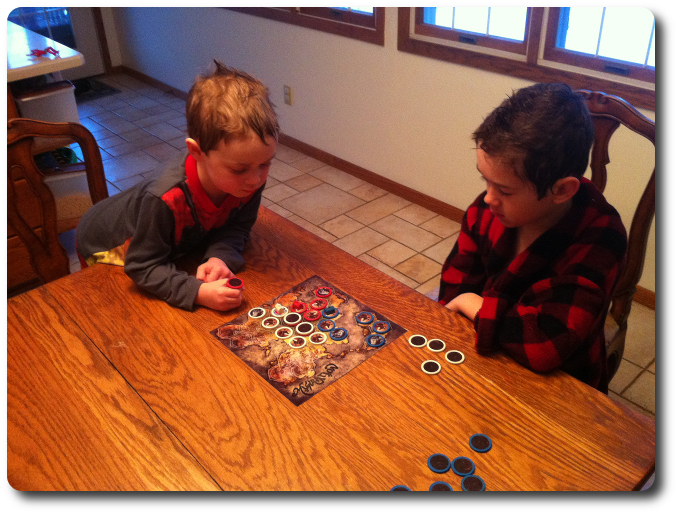
My two oldest little geeks look at the board while I quickly take a snapshot
The Parent Geeks were also very impress and enjoyed playing Migration with both their families and with their friends at a peer level. While most of the games we observed with the Child Geeks showed rudimentary use of tactics and skills, the Parent Geeks demonstrated excellent tactical and strategic game play after they completed their first game. Which was more or less the common experience we found throughout our game playing. It usually takes a player a single game to get a solid grasp of what is going on and their next game is remarkably and visibly improved. Even the non-gamers really enjoyed themselves. One Parent Geek said, “this is the kind of area control game you can enjoy on lots of levels and with everyone in the family.” So very true. The game was approved by the Parent Geeks with two thumbs up.
The Gamer Geeks initially approached Migration with a bit of negativity. The continued use of game sheets (a thick and somewhat durable piece of paper) really irritates them. Gamer Geeks want their games to last, and sitting down to any game that doesn’t look like it can withstand years of steady game play sometimes leaves them feeling rather “put out”. Migration was no different and it was clear that it was going to be an uphill battle to get the Gamer Geeks to look past the production value and focus in on the game play. Turned out that the proverbial “hill” was just a bit of a bump. Once the Gamer Geeks understood the game and got to playing it, they had a great time. They remarked that Migration was a “very creative and intuitive area control and resource management game” and was “exceedingly creative and beautifully illustrated.” Even though they still think Migration is less than perfect because of the game sheet, they didn’t have to think twice about approving it. According to one Gamer Geek, “it’s easy to get past the game’s flimsiness when you see how solid the game play is.” Well, isn’t that witty. The Gamer Geeks approved of Migration.
Migration: A Story of Generations almost appears to have been designed in reverse. For an abstract area control and resource management game, it has a surprisingly rich and interesting back story (provided in the rule book). I have seldom seen this. Most of the time, the theme and narrative of an abstract game (if there even is one) feels stuck on so as to make it easier to grasp “what” it is you are doing. This is all important because players do not want to feel like they are just pushing small cubes around a map. They need to see the abstract parts as things with meaning. In Migration, everything has meaning. Instead of the narrative and theme complementing the game, it is the game that is complementing and further reinforcing the narrative and theme. A rarity, indeed.
This is a very good game. Surprisingly good. It’s not doing anything new, however. Special units with special movement rules to control specific map locations is very common in most area control and combat games. Despite it not being “fresh” or “groundbreaking”, the game play is exciting, engaging, and enjoyable. I recognized all the game mechanisms and never felt like I was being treated to leftovers. The illustrations helped a great deal, but more than anything, it was the very solid rules and game play that quickly won me over. Its true strength comes from its simplicity and attractiveness. You want to approach this game because of how good it looks. Once you sit down and learn more, you realize it’s a game you understand and can play. Moments later, you are playing and losing track of time.
And yet, despite all my praise, I am not satisfied. After playing Migration a good number more times than what is probably normal, I felt that I had fully explored it. The playing area starts to feel too small and the Explorers become old hat. There is enough game in the box to keep you satisfied for many play sessions, but for veteran game players, they’ll quickly reach the game’s end and realize there is nothing left to explore. That is never a good feeling, but there is hope. There are strong hints that there is more on the horizon for Migration, including new Explorers and possibly new maps to conquer.
When expansions start rolling out, I can see this already fantastic game becoming more…well… fantastic. What’s bigger than fantastic? Ubertastic? Is that a word? It’s a word. Let’s go with it. Ubertastic. Until then, what you get in the game box is well worth your time and your energy. An outstanding first step in what I hope is just the first. I want to see where this game goes and will eagerly follow it.
This game was given to Father Geek as a review copy. Father Geek was not paid, bribed, wined, dined, or threatened in vain hopes of influencing this review. Such is the statuesque and legendary integrity of Father Geek.




Joe Cannon here, creator of Migration. Thank you so much for your positive review; I’m so glad you enjoyed the game! We are in fact working on an expansion, the details of which are released on my Facebook page: facebook.com/migrationthegame.
I’ve seen this game floating around The Game Crafter for quite some time now, and I agree that it’s jaw-droppingly gorgeous. I also agree that the sparrow is a cool image, even independent of the game.. it wouldn’t look out of place on the cover of a rock album.
This was a very eye-opening review. While, again, I definitely shared your first reaction to the artwork, I was surprised at the size of the board–so tiny! I was worried that the game in practice would feel cramped. It’s good to know then, that even though a bigger board was eventually desired, you and your groups had so much fun with it.
I’ve also heard through the grapevine that TGC will soon be rolling out a same-sized board that is the nice, thick chip-board we all know and love. Seems like it would suit this game very well.
Great review!
The continued use of what we refer to as the “game sheet” makes sense for financial reasons. The price of games starts to quickly climb when you mount the game board. It’s just a shame it continues to be used so much, especially for games like Migration. The value of the game is reduced somewhat because of the game bit quality, even though the game play is superb.
Do you remember adults telling us as kids that it’s the “beautify on the inside that counts”? That’s only half right.
Even the best games in the world won’t get much attention if it looks cheap. First impressions are EXCEEDINGLY important. Something for budding game designers to consider and not take lightly.
I’m hearing the request for higher quality materials loud and clear: I will explore options for a change as soon as they are available 🙂
Can’t wait to see this on Kickstarter next month. Looks like a winner!
Coming out Feb.9th! Sooner than you think!